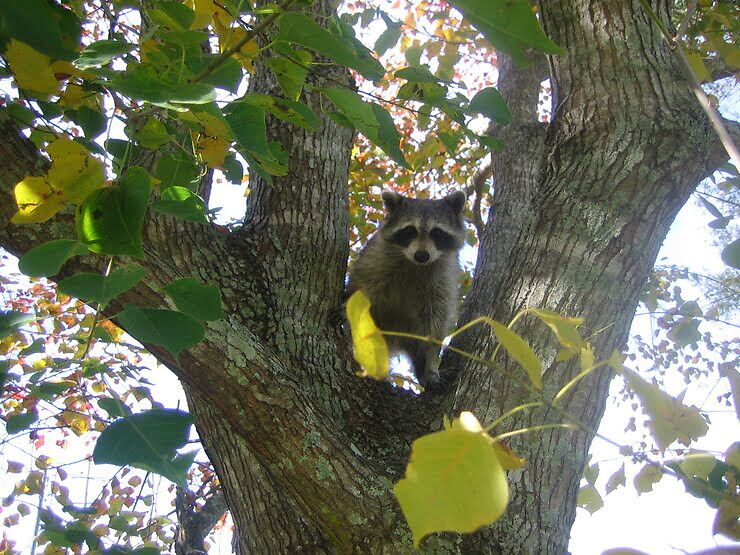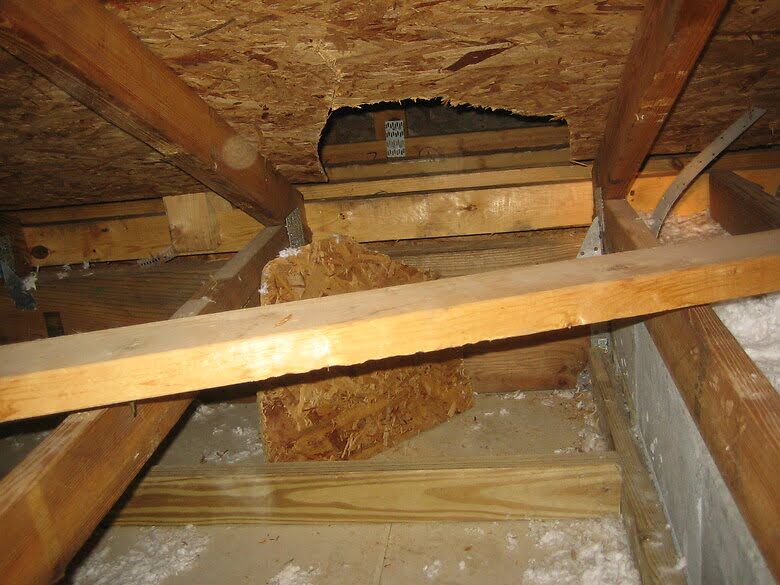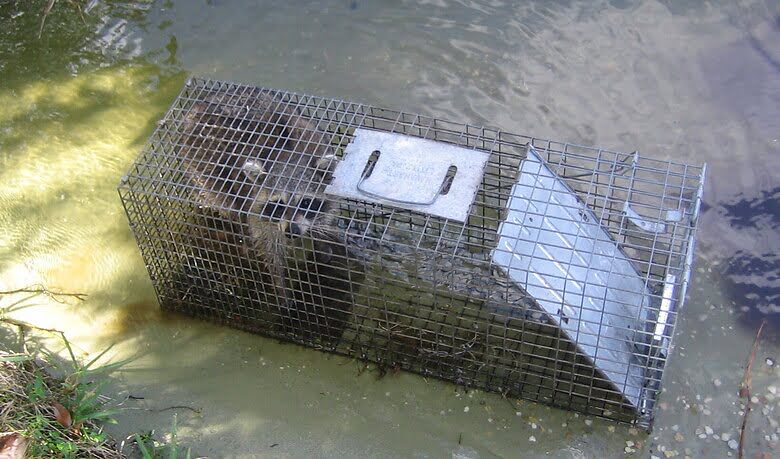About Nuisance Raccoons
If you clicked on this page, you either have a bit of a raccoon problem or you’re simply fascinated by nature! Either way, read on for deeper insight and more information on raccoons.

About
Names
- Procyon Lotor – The scientific name for the raccoon is Procyon Lotor.
- Arakun – The Algonquian Indians named the raccoon arakun. The direct translation of arakun is “he scratches with his hands”, due to the hand-like paws and claws a raccoon uses for digging and climbing.
- Wica – The raccoon is also know as the wica, meaning “little man”.
- Bandit – Perhaps the above descriptions, as well as the raccoon’s mask-like eye fur, contribute to the reputation of it being called a “bandit”.
Habitat
Raccoons are nocturnal creatures that can be found in North America, Russia, Japan, South America, Canada, Mexico, and Germany. They prefer woody and marsh areas and are known for often wetting their food before consuming it.
Raccoons are considered generalists because they can survive in varying environments. Unfortunately for some, this includes attics, basements, and crawl spaces.
Diet
Raccoons are omnivores and tend to consume foods such as crayfish, snails, frogs, and clams. However, they can also eat pet food, bird eggs, fruits, vegetables, and garbage.
Life Details
- Lifespan – In the wild, the average raccoon lifespan is 3 years. However, they can survive for over 10 years in captivity.
- Maturation & Mating – The female raccoon takes about a year to mature into an adult, while the male takes roughly two years. They mate in the months between January and June.
- Rearing – Males can become very aggressive to the extent of eating or killing their young, therefore the female kicks the males out once she bears her kits.
- From Young to Adult – Usually, about 2-5 kits per litter survive. Once fully grown, the average size of a raccoon is 2-3 feet long and weighs roughly 22 pounds.
Problems They Cause

For some, the sheer fact that raccoons are wild animals is enough to determine they are problematic. However, this can be more frustrating for those with live crops.
Destroy
Plants
If you garden or farm, you might become increasingly frustrated with raccoons digging up plants such as corn and cherries. They can destroy stalks in their efforts to attain corn ears and can even eat through watermelons.
Diseases
More indirect forms of harm from raccoons involve coming into contact with its feces or urine.
- Baylisascaris is a bacteria that can be found in the feces of raccoons. You are at risk if you ingest it through contamination of soil or water. Signs and symptoms include fever, coma, loss of coordination, fatigue, nausea, and loss of muscle control.
- Leptospirosis can be found in raccoon urine and can lead to damage to the liver or kidneys. Fortunately, this is rare to catch.
- Giardiasis can be found in several types of animals and is usually found in the feces of raccoons. Similarly, the spread can be due to contamination of water and soil. Therefore, wear gloves when dealing with raccoon feces whenever possible.
Rabies
Although not common, raccoons can kill poultry, destroy eggs, and even attack dogs or cats. Warning signs of their attacks include hissing and growling, but this is usually just to deter danger. You don’t want to get bit or scratched by a raccoon because this increases the chances of getting rabies. Although it is rare, the majority of U.S. cases of rabies in wild animals are due to raccoons. Therefore, always err on the side of caution when coming into contact with them.
Prevention
Maintain a Clean Environment
The first step to keeping raccoons at bay is by maintaining a clean environment. As mentioned before, these omnivores can eat anything from fish to pet food.
- Avoid leaving trash cans open or having pet food lying around.
- If you leave your pet’s food or water out overnight, this can lead to a confrontation between the two animals. You also don’t want your pet to come into contact with an infected raccoon or its droppings. So try as much as possible to feed them indoors or at least keep food out for a minimal amount of time.
Watch Out for Entrypoints
If you’re concerned about raccoons getting into your house, perform routine inspections to ensure they don’t have easy entry through the holes in the building, open chimneys, windows, doors and crawl spaces. Places like attics make for perfect dens for these animals, so keep an eye out for places like vents that may show signs of destruction.
If they have already made it into your home, you might notice damage, scratches, and hear thumping sounds. Be cautious and ensure that they don’t have any kits (raccoon babies).
Keeping Raccoons Out
If you are more concerned about your yard or farm, some techniques include:
- noise disturbance
- motion tricks
- electronic sprinklers
- motion-activated bright lights
These can startle the raccoons enough to temporarily chase them away. Other options include using:
- radios
- scarecrows
- single-strand fencing around areas of concern
Keep in mind, however, that many of these techniques are short-term solutions.
Professional Removal Tactics
In some cases, you might be able to chase them away on your own, while in others you might have to contact a licensed wildlife removal professional. Let’s first begin with the control that you do have.
As mentioned before, you want to begin by sealing all entry points, whether it’s holes or chimneys. If you want to test whether the animal has left or entered the building, you can attempt to place a plastic sheet or newspaper over these entry points to gauge whether it has been tampered with or torn through.
Chase the Raccoon Away
If you are in the same space as the raccoon, do not corner it or else it will likely become aggressive toward you.
- First, make sure that your body is well protected by wearing thick gloves and covering your skin.
- Next, you want to try and push it out gently using a long instrument or object such as a chair. This is going to create some distance between you and the animal.
- At this point, the animal will probably want to exit anyway, so make sure you have opened the door or window so that it can have an easy escape.
Trap the Raccoon
If you are unsuccessful, the next stage might be to get a cage or box trap.
- Bait the raccoon with something sweet like jam or marshmallows so as to reduce the likelihood of attracting non-target animals.
- Make sure to check traps frequently and observe wildlife laws in your state. For instance, it is illegal to relocate wild animals in California. Reasons can be due to the risk of spreading diseases such as rabies.

